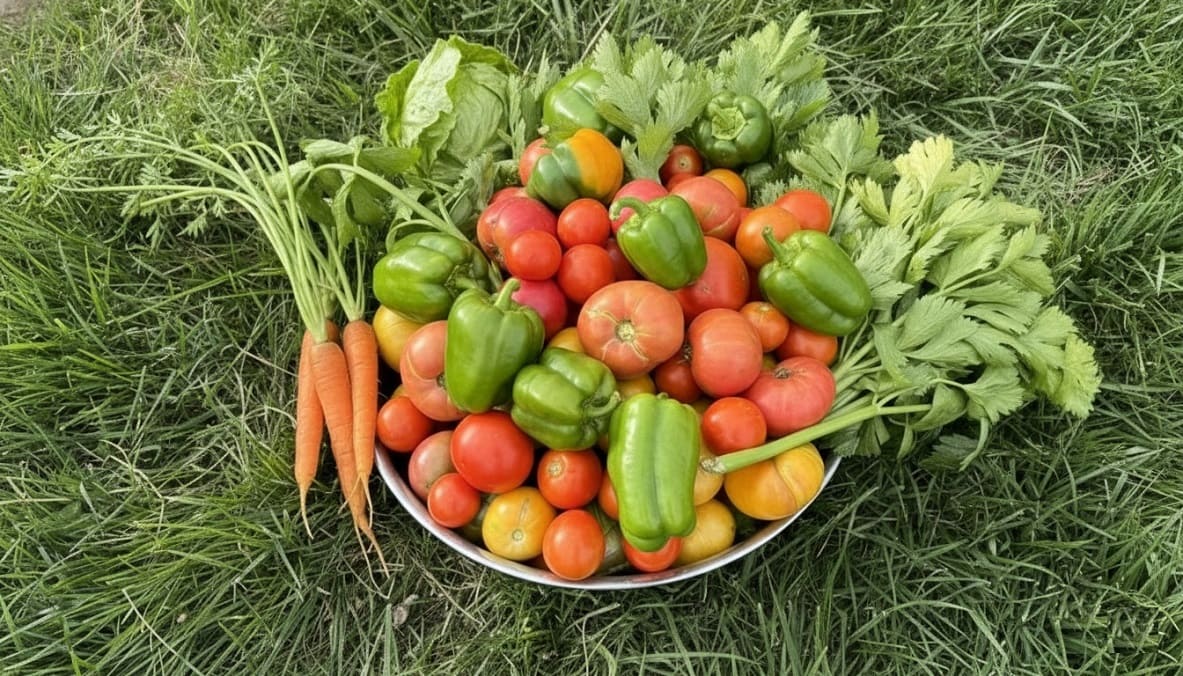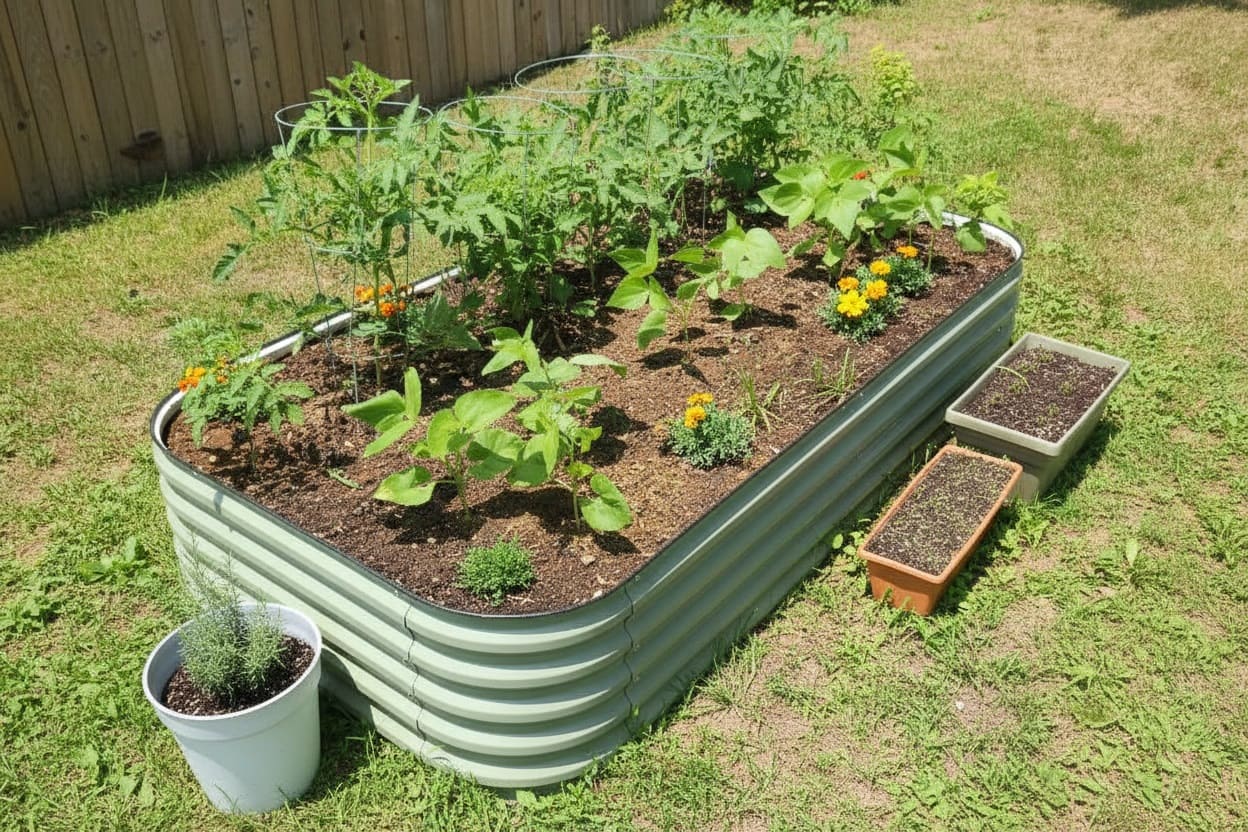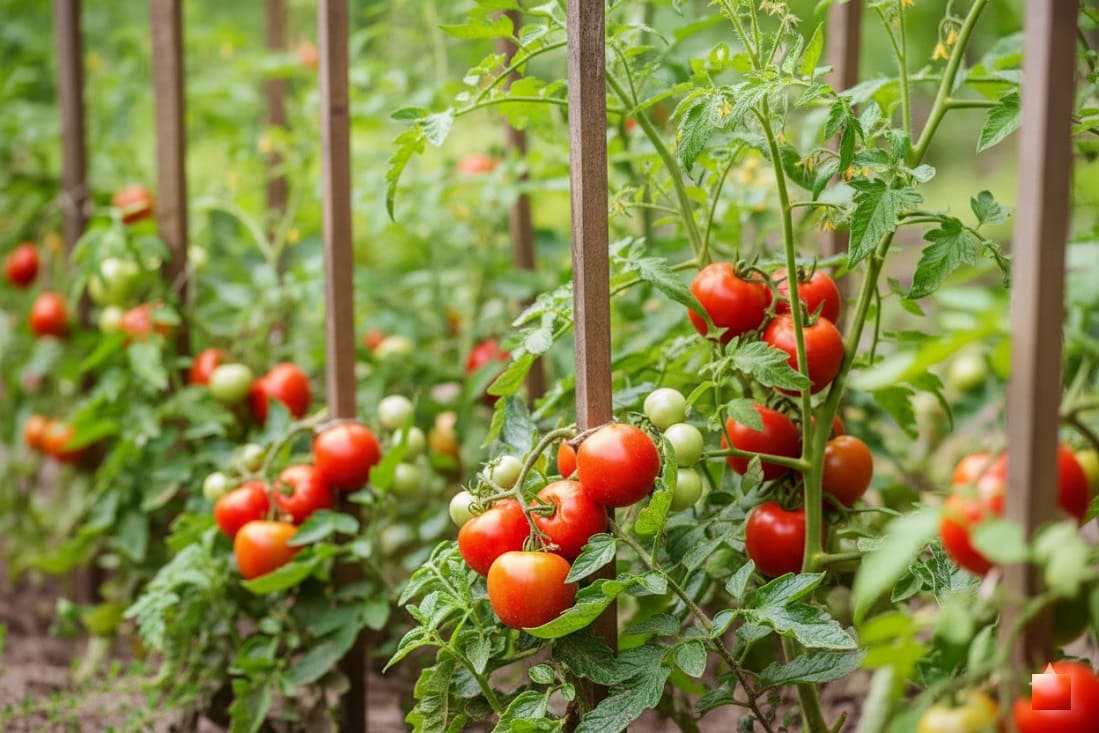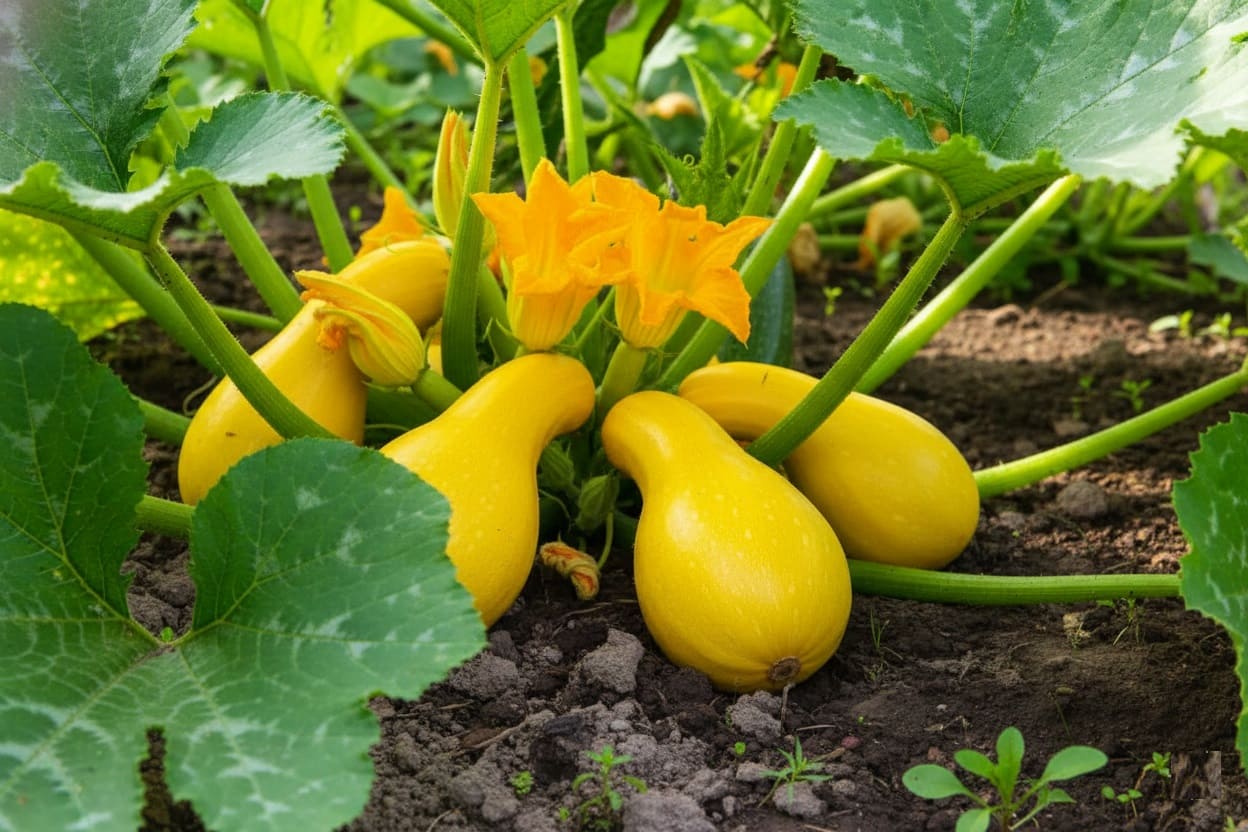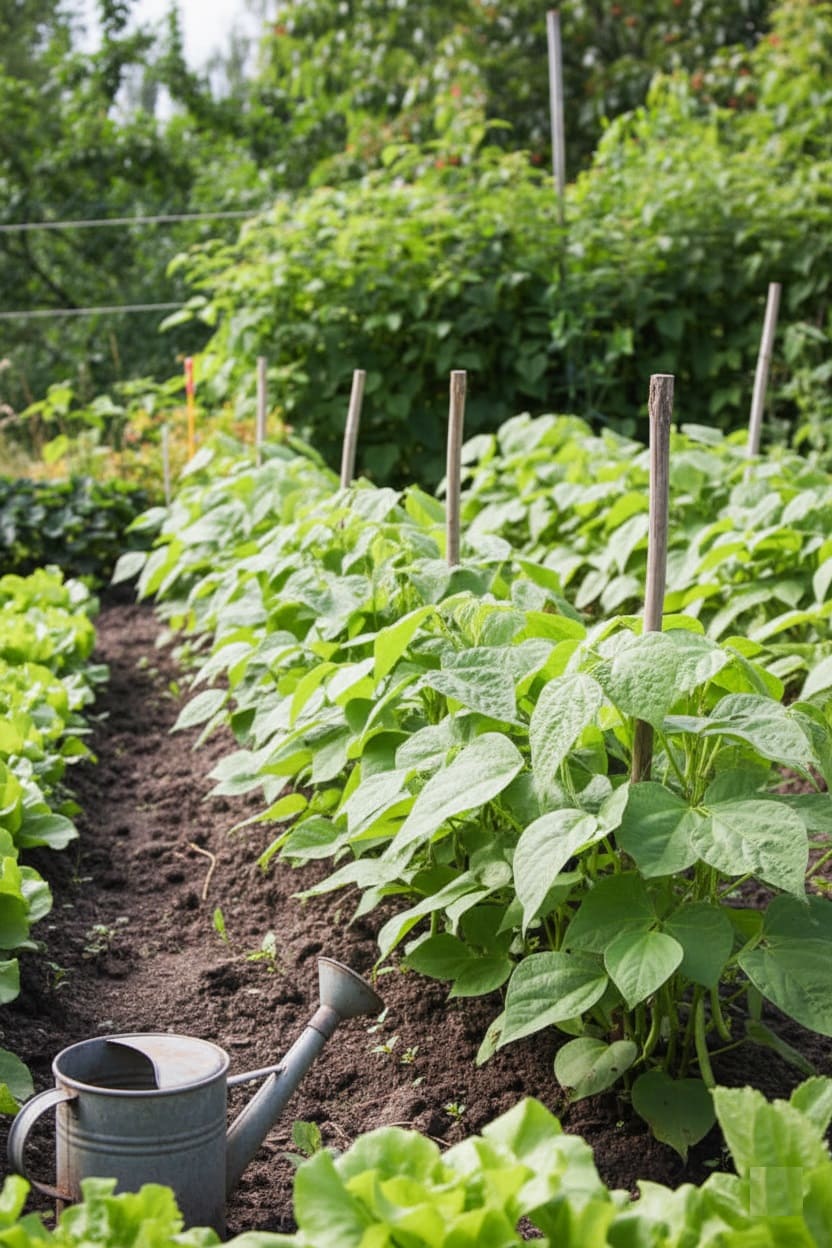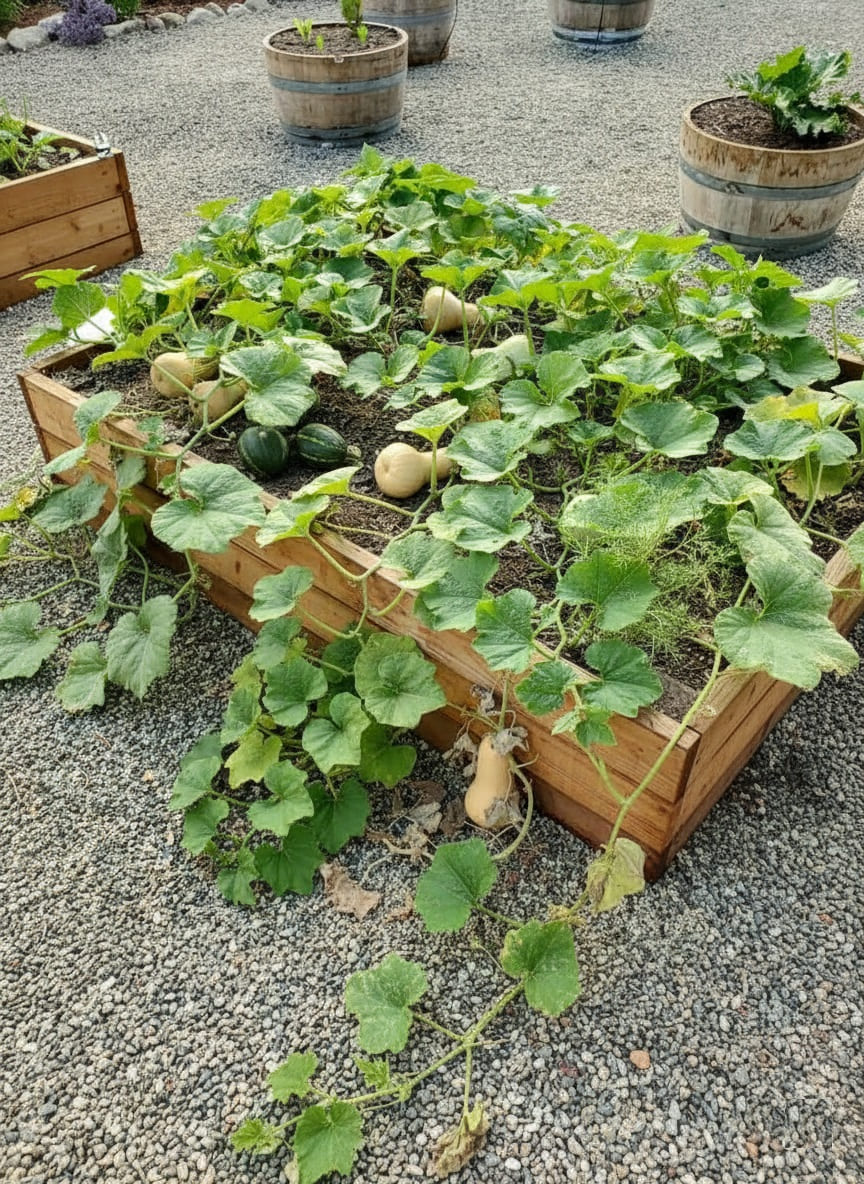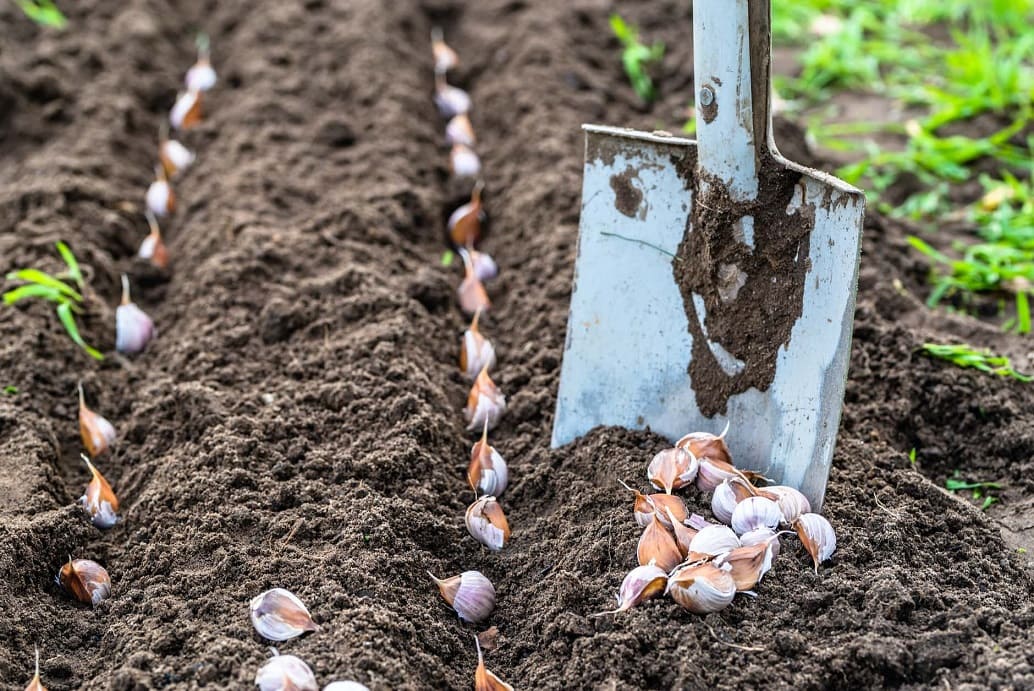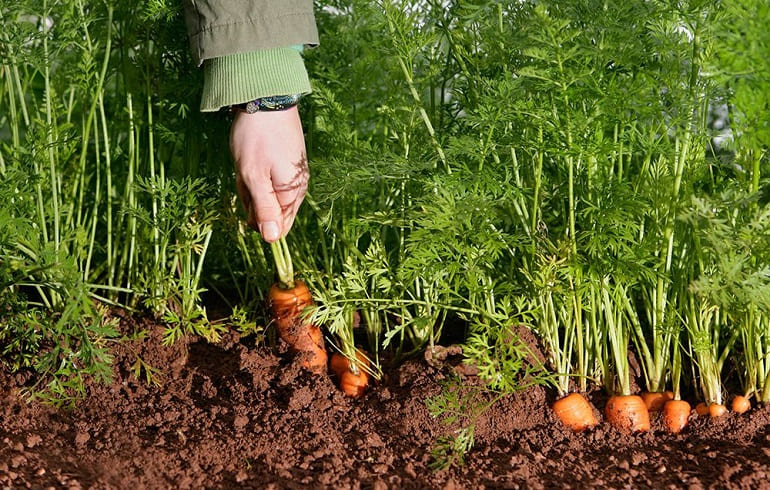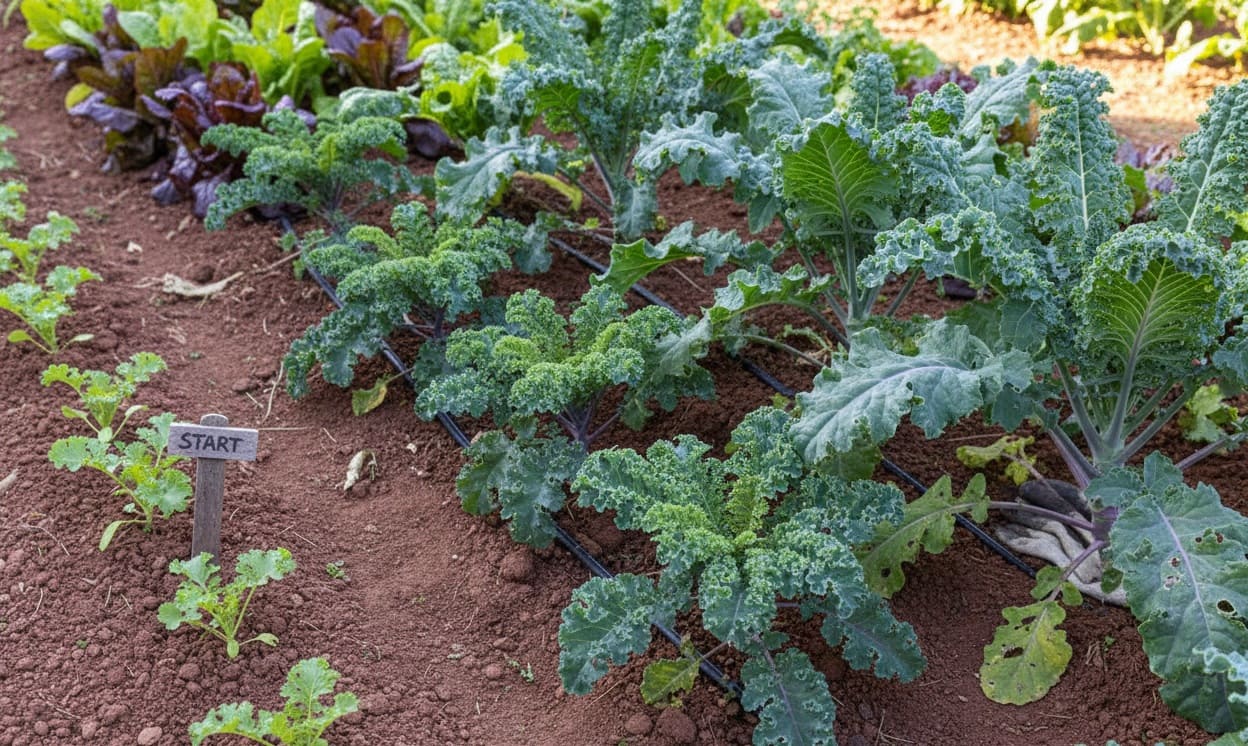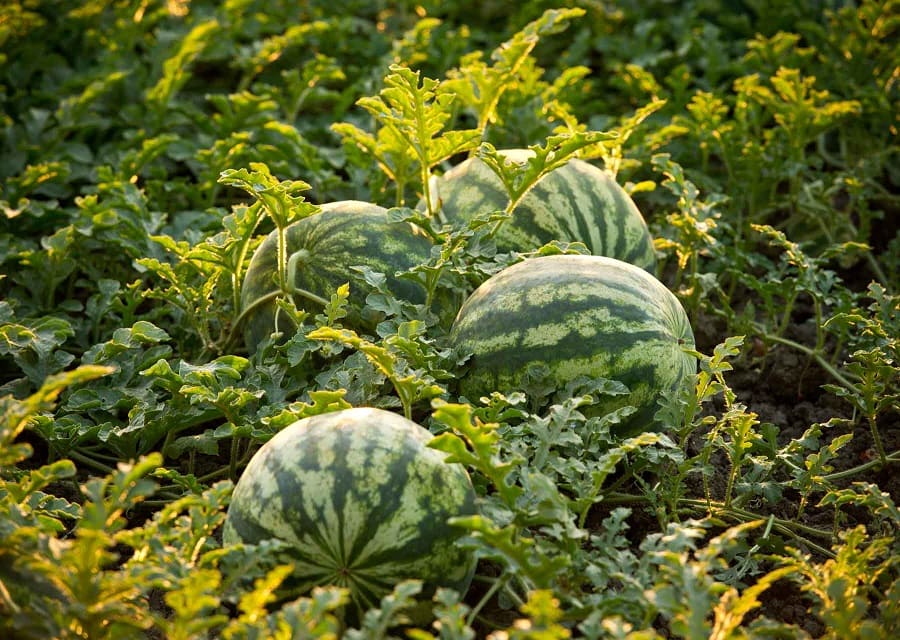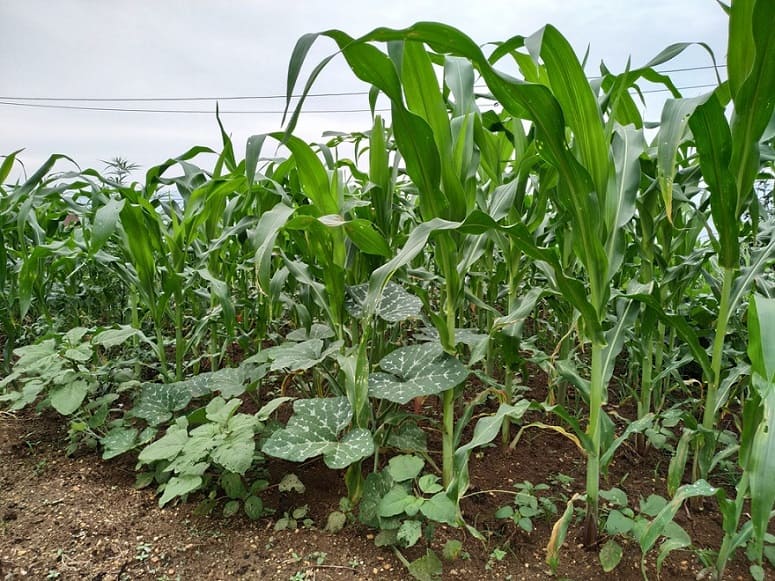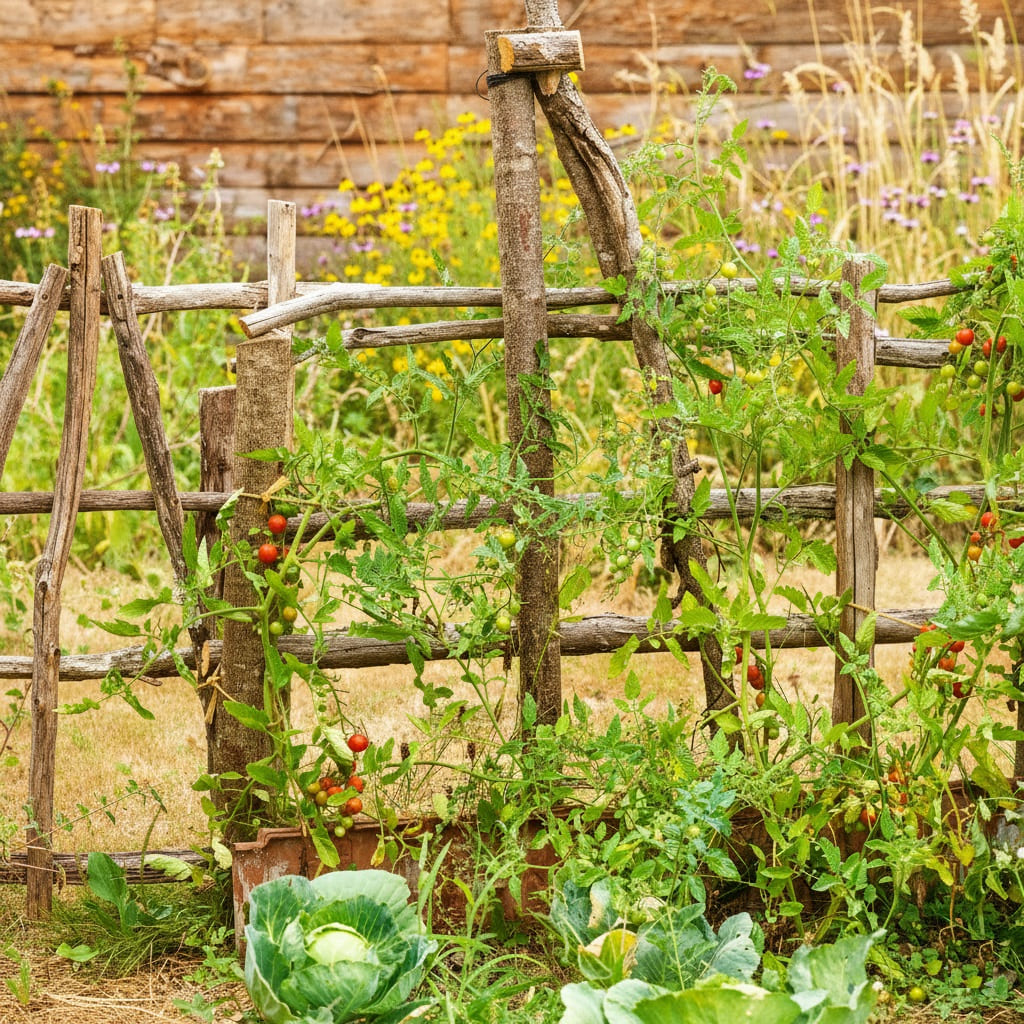I still remember standing in my first garden plot, seed packets clutched in both hands, feeling completely overwhelmed. The space seemed enormous—and somehow not nearly big enough.
How many tomato plants would actually feed my family? Would ten bean plants be too many or laughably few? I had no idea if I was about to starve or drown in zucchini.
That moment of garden paralysis is where many of us start. We dream of rows of vegetables feeding our families, pantries lined with jars of home-canned goodness, and root cellars packed with winter squash. But between the dream and reality lies one critical question: how much do you actually need to plant?
The truth is both simple and complicated. While there’s no one-size-fits-all answer, you can absolutely figure out the right amount for your family with some thoughtful planning. Let’s walk through exactly how to do that.
Why Growing a Year’s Supply Matters More Than Ever
Before we dive into the numbers, let’s talk about why this matters. Growing a year’s worth of food isn’t just about saving money at the grocery store (though that’s certainly a benefit). It’s about:
- Food security: Recent supply chain disruptions have shown us how vulnerable our food system can be. Growing your own creates a buffer against uncertainty.
- Health and nutrition: Vegetables lose nutritional value from the moment they’re harvested. When you grow your own, you’re eating produce at its peak, and you control what goes into your soil.
- Skill building: Our great-grandparents knew how to feed themselves. Reclaiming these skills connects us to our heritage and builds genuine self-reliance.
- Quality of life: There’s something deeply satisfying about pulling dinner from your own garden, especially in January when that jar of tomato sauce represents August sunshine.
The Foundation: Know Before You Grow
Before you order a single seed, you need to understand your unique situation. Growing food for your family isn’t a plug-and-play operation—it requires honest assessment of several key factors.
Factor #1: Your Family’s Actual Eating Habits
This sounds obvious, but it’s the most commonly overlooked step. Don’t plant what you think you should eat. Plant what you actually eat.
Take a month to track your vegetable consumption. Keep a simple tally on your refrigerator: How many tomatoes did you use? How much lettuce? Did anyone actually eat those brussels sprouts, or did they languish in the crisper drawer?
One family might go through five pounds of tomatoes weekly making sauces, salsas, and eating fresh, while another rarely uses them. That’s a difference of dozens of plants in your garden plan.
Pro tip: Include your kids in choosing varieties. Children who pick “purple dragon” carrots or “lemon” cucumbers from a seed catalog are far more likely to actually eat them come harvest time.
Factor #2: Your Available Space
Space is your limiting factor, but probably not as limiting as you think. The key is understanding how to maximize what you have.
For fresh summer eating, a family of four can work with as little as 100-200 square feet—that’s just 10×10 to 10×20 feet. But to grow a true year’s supply including preservation, you’re looking at 200-300 square feet per person, or roughly 800-1200 square feet total.
Think beyond traditional rows, though. Vertical gardening, succession planting, intensive methods like square-foot gardening, and intercropping can dramatically increase yields in small spaces. A 4×8 raised bed, properly planted, can produce an impressive amount of food using intensive spacing techniques.
Factor #3: Your Growing Season and Climate
Your climate dictates everything from which vegetables will thrive to how many succession plantings you can squeeze in. Regions with long, warm seasons can extend planting and harvest times significantly, while shorter seasons require careful timing and potentially season extension methods like cold frames or greenhouses.
Check your USDA hardiness zone and know your first and last frost dates. In Zone 7 and warmer, you might garden nearly year-round. In Zone 4, you’re racing against a 4-5 month growing window unless you get creative with protection.
Factor #4: Preservation Plans
This is crucial: fresh eating requires far fewer plants than preservation. If you want to can tomato sauce, freeze green beans, and store winter squash, you’ll need to plant 3-4 times more than for fresh consumption alone.
Think through your preservation methods now:
- Root cellaring: Requires crops like potatoes, winter squash, onions, carrots, and beets that store well
- Canning: Best for tomatoes, beans, pickles, and high-acid foods
- Freezing: Works for most vegetables but requires freezer space
- Dehydrating: Great for herbs, peppers, and some fruits
Each method has different space and labor requirements. Don’t plant 50 pounds of tomatoes if you don’t have time to can them or freezer space to store them.
The Real Numbers: How Much to Plant Per Person
Now we get to the practical heart of the matter. These numbers represent averages for feeding one adult for a full year, including both fresh eating and preservation. Adjust for children (count them as half portions), teenagers (count as adults or more!), and your family’s specific preferences.
High-Yield Vegetables: Maximum Return for Your Space
These are your garden workhorses—crops that produce abundantly relative to the space they occupy.
1. Tomatoes are the cornerstone of most preservation gardens, and for good reason. A single, well-tended tomato plant can produce anywhere from 10 to 30 pounds of fruit over a season, depending on variety and growing conditions.
Indeterminate varieties (those that keep growing and producing until frost) typically outyield determinate types (that produce one concentrated harvest).
For a family of four, I recommend 16-24 tomato plants total if you want to both eat fresh all summer and preserve enough for year-round use.
Choose a mix: several paste varieties like San Marzano or Roma for sauce-making, a few slicers for sandwiches and salads, some cherry tomatoes for snacking, and maybe one or two heirloom varieties for their incomparable flavor.
This variety ensures you have the right tomato for every use while spreading your risk—if one variety struggles with disease, others might thrive.
👉 Here’s How to Grow Tomatoes in Pots: Easy Container Gardening Guide
2. Peppers vary dramatically in productivity. One hot pepper plant can produce 20-50 peppers, which is why a single jalapeño or habanero plant usually suffices per family. Sweet bell peppers are less prolific, averaging 5-10 peppers per plant.
For a family of four, plan on 8-12 sweet pepper plants and 2-4 hot pepper plants, adjusted for your family’s heat tolerance.
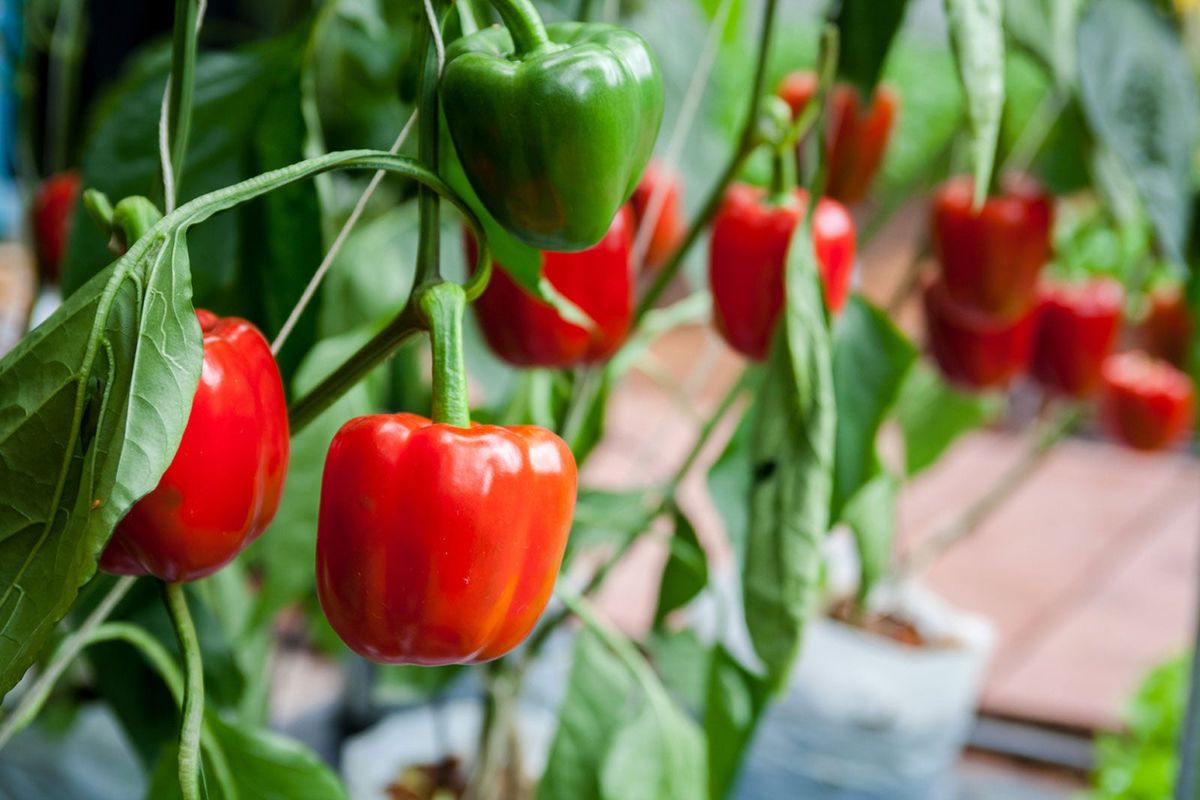
3. Summer squash and zucchini are famously prolific. Anyone who’s grown them has experienced the “I turned my back for three days and now I have baseball bat-sized zucchinis” phenomenon. One healthy plant produces 6-10 pounds over the season, often more.
Start with 1-2 plants per person and resist the temptation to plant more. You can always add another plant mid-season if needed, but you can’t un-plant an overwhelming abundance.
4. Pole beans are one of the most productive vegetables for the space they occupy. Growing vertically, they produce continuously from mid-summer until frost. Three to five plants per person typically provides plenty for fresh eating plus some for freezing.
Bush beans require more plants—10-15 per person—but they don’t need trellising and produce their harvest all at once, which can be advantageous if you’re planning to can or freeze them in one session.
Storage Crops: Your Winter Security
These are the vegetables that, when properly stored, last for months after harvest. They’re the backbone of winter eating when fresh garden produce isn’t available.
1. Potatoes are calorie-dense, versatile, and store beautifully when cured properly. Each potato plant produces roughly 5-10 pounds depending on variety, soil quality, and growing conditions. For a family of four eating potatoes twice weekly year-round, plan on 40-60 plants, yielding 250-400 pounds.
This might sound like a lot of plants, but potatoes are easy to grow. Just keep them hilled or mulched deeply, water consistently, and harvest after the plants die back. I grow mine in a dedicated potato bed that rotates location each year to prevent disease buildup.
Choose storage varieties like Kennebec, Yukon Gold, or German Butterball rather than new potato varieties for maximum storage life.
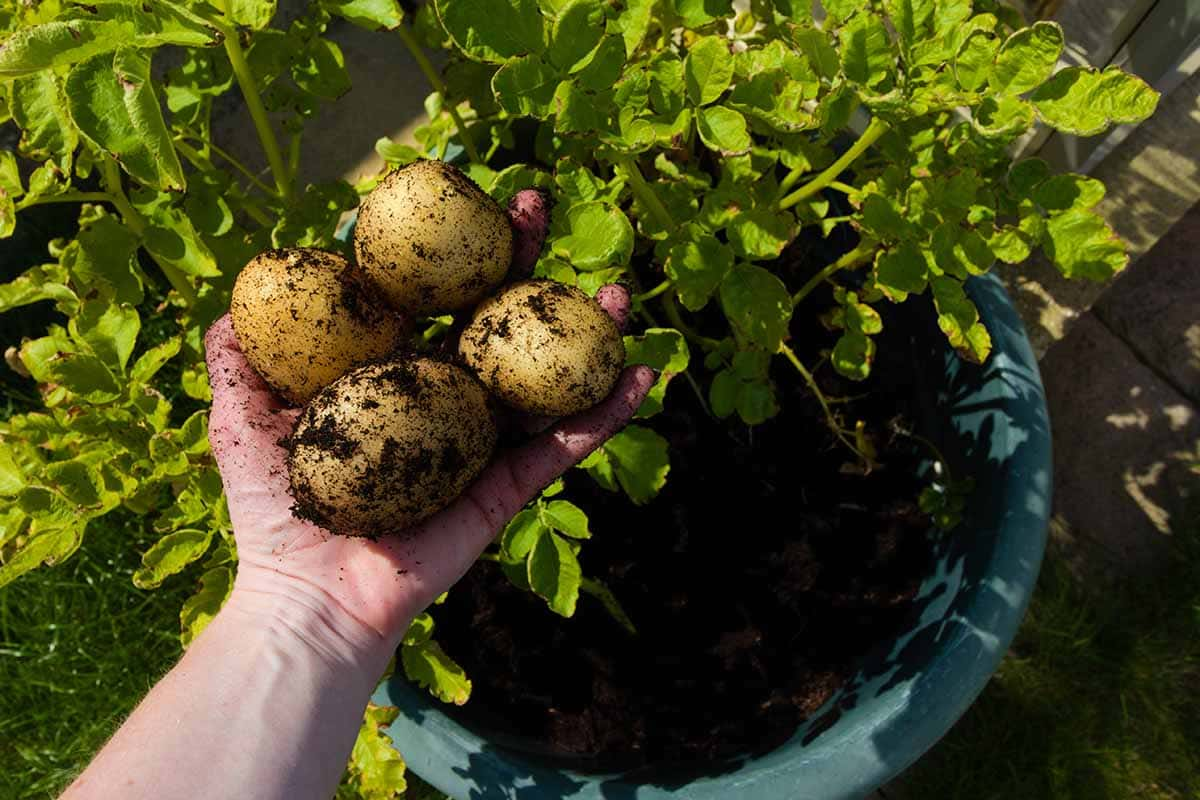
2. Winter squash—including butternut, acorn, delicata, and hubbard types—is both calorie-dense and nutritious. Each plant produces 3-4 squash on average, though vigorous plants can produce more.
These sprawling plants take up significant space (plan on 15-20 square feet per plant), but they reward you with squash that store for 3-6 months in a cool, dry location.
For a family of four, 8-12 winter squash plants provide enough for regular meals through winter and early spring. I grow mostly butternut since they’re versatile and store longest, plus a few delicata for variety because they’re absolutely delicious roasted.
3. Onions and garlic are kitchen staples you’ll use almost daily. The good news is they’re easy to grow and store exceptionally well when properly cured—often 6-10 months. Plan on 60-80 onion bulbs for a family of four, which sounds like a lot but really isn’t once you start cooking with them regularly.
The same applies to garlic: 60-80 cloves planted in fall will give you one bulb per clove the following summer.
I’ve found onions grown from sets (small bulbs) are easier for beginners than onions from seed, though seed-grown onions can produce bigger bulbs. For garlic, always source bulbs from garden suppliers rather than grocery stores—they’re selected for your growing region and aren’t treated with sprout inhibitors.
4. Root vegetables—carrots, beets, turnips, rutabagas, and parsnips—are excellent storage crops that can last months in a root cellar or even simply buried in garden soil under heavy mulch. They’re also perfect for succession planting since they mature relatively quickly.
For a family of four, plan on 80-120 carrots, 40-60 beets, and 20-30 turnips or rutabagas depending on your family’s preferences. These numbers sound high, but root vegetables are dense plantings—you can grow 16 carrots in a single square foot using intensive spacing. A 4×8 raised bed can produce more root vegetables than most families can eat.
Leafy Greens: The Nutrient Powerhouses
Leafy greens are remarkably productive relative to space. They’re also some of the most nutritious vegetables you can grow, packed with vitamins, minerals, and antioxidants.
1. Lettuce is perfect for succession planting—grow a little at a time continuously rather than all at once. Plant 15-20 plants every 2-3 weeks from early spring through early summer, then again from late summer through fall.
Choose cut-and-come-again varieties like oakleaf or buttercrunch that allow you to harvest outer leaves while the plant keeps producing, dramatically extending each plant’s productivity.
A 4×4 foot bed in continuous succession can supply a salad-eating family with fresh lettuce from April through November in most climates. That’s just 16 square feet producing for eight months.

2. Spinach, chard, and kale are cold-hardy greens that thrive in spring and fall, with kale often surviving winter in milder climates. Swiss chard is particularly wonderful—plant it once in spring and it keeps producing until hard frost, regrowing after you harvest outer leaves. A family of four needs only 5-10 plants of each type.
Kale deserves special mention: it’s nearly indestructible, withstands frost (which actually improves its flavor), and produces prolifically. Five plants will supply you with fresh greens for months. I plant mine in mid-summer for fall and winter harvest, when its slightly bitter flavor is more welcome than in summer’s heat.
The Brassicas: Cool-Season Favorites
The brassica family—broccoli, cauliflower, cabbage, and brussels sprouts—are cool-season crops that prefer spring and fall growing. They’re nutrient-dense, relatively productive, and most store or preserve well.
1. Broccoli is worth growing if your family enjoys it, but it’s somewhat space-intensive and slower-growing than many crops. The key is choosing sprouting varieties that produce side shoots after you harvest the main head, extending your harvest by 3-4 weeks and dramatically improving productivity.
For a family of four, 15-20 plants (grown in spring and again in fall) provides plenty for fresh eating plus some for freezing.

2. Cabbage is a different story entirely. Cabbages store remarkably well—I’ve kept them in my garage fridge for 4-5 months—and one head goes a long way. They’re also perfect for fermenting into sauerkraut, which is how we preserve most of ours.
Ten to twelve plants per family of four, split between spring and fall plantings, provides enough for fresh eating, sauerkraut-making, and some storage.

3. Brussels sprouts are slow-growing and take up considerable space for a long time, so only grow them if your family genuinely enjoys them. Six to eight plants per family of four is plenty. I’ve found most kids strongly dislike brussels sprouts, so adjust accordingly.

4. Cauliflower is similar to broccoli in space requirements and growing needs. Eight to twelve plants, split between spring and fall, works well for a family of four.
Cucumbers and Melons: Summer Treats
1. Cucumbers are wonderfully productive when grown vertically. One cucumber plant typically produces 10-15 cucumbers over its lifespan. Grow them up a trellis or fence to save space and improve air circulation, which helps prevent powdery mildew, their nemesis.
For a family of four, 6-8 cucumber plants provides enough for fresh eating all summer plus plenty for making pickles if that’s your thing. Choose a mix of slicing cucumbers for salads and pickling varieties if you plan to preserve them.

👉 Here’s How to Get Rid of Bitter Taste in Cucumbers With 4 Simple Techniques
2. Melons—cantaloupes, honeydews, and watermelons—are space-intensive plants (15-20 square feet each) that produce 2-4 fruits per plant.
For a family of four, 4-6 melon plants of various types gives everyone a taste of summer sweetness without overwhelming your garden space. Smaller “icebox” varieties of watermelon work better in limited spaces than giant varieties.
Corn: The Space Question
Corn is beloved by many families but requires careful consideration for space. Each corn plant produces just 1-2 ears, and corn needs to be planted in blocks (not rows) for proper wind pollination. A family of four would need 60-80 corn plants for regular fresh eating and some freezing.
That’s 60-80 square feet minimum, and realistically more like 100-120 square feet when you account for the block planting pattern. Corn is also a heavy feeder that depletes soil. I only grow corn when I have excess space and soil fertility to spare. If space is tight, corn is one of the first crops I’d eliminate in favor of more productive options.
Making Your Garden Plan Work
Raw numbers are helpful, but translating them into a functional garden requires strategy. This is where planning transforms from theoretical to practical.
Start Small and Scale Intelligently
The biggest mistake new gardeners make is planting too much too soon, and I say this as someone who committed this exact error. My first garden was about 1,200 square feet. By July it was a weedy disaster because I simply couldn’t keep up with the maintenance while also juggling work and family life.
The next year I cut the size in half, and everything improved: less weeding, better maintenance, healthier plants, bigger harvests.
Start with a manageable 100-200 square foot garden your first year. Pick 3-5 crops you know you’ll use heavily—perhaps tomatoes, lettuce, beans, peppers, and zucchini. Master growing and preserving those before adding more. This focused approach builds skills and confidence without overwhelming you.
In year two, add another 2-3 crops. Maybe potatoes and carrots, or winter squash and cucumbers. Keep building each season. By year four or five, you’ll have a mature garden system that produces abundantly while remaining manageable because you’ve built your skills gradually.
Think of it like strength training: you don’t start by deadlifting 300 pounds. You start with the bar and add weight as you get stronger. Your gardening skills are the same.
Master Succession Planting
Succession planting is your secret weapon for maximizing space and extending harvest. Instead of planting all your lettuce at once—leading to three weeks of overwhelming salads followed by nothing—plant small amounts every 2-3 weeks throughout the spring and again in fall.
The best crops for succession planting are those that mature quickly and are typically eaten fresh: lettuce and salad greens (mature in 30-45 days), radishes (25-30 days), carrots (60-75 days), bush beans (50-65 days), beets (50-70 days), and spinach (40-50 days).
Succession planting also means thinking about what follows what in your garden. As soon as one crop is harvested, immediately plant something else in that space. A bed that grows peas in spring can be replanted with bush beans for summer, then planted with kale or spinach for fall. That’s three crops from the same soil in a single season.
I keep a simple planting calendar that tells me when to start new successions. Every Saturday morning in spring, I check the calendar and plant whatever is due. It takes maybe 15 minutes and ensures continuous harvests rather than feast-or-famine.
Use Companion Planting and Intercropping
Intercropping means planting fast-growing crops around slower-growing ones, using space that would otherwise sit empty while slower crops establish.
While your tomato plants are small, squeeze in radishes or lettuce that will be harvested before the tomatoes need the space. Plant quick-maturing greens between your broccoli plants. Tuck herbs and flowers among your vegetables.
Companion planting goes further by pairing plants that benefit each other. The classic “Three Sisters” combination of corn, beans, and squash is a brilliant example: corn provides a trellis for beans, beans fix nitrogen in the soil for corn’s heavy feeding needs, and squash creates a living mulch that suppresses weeds and retains moisture.
Other proven companions include tomatoes with basil (which supposedly improves flavor while deterring pests), carrots with onions (the onion smell confuses carrot flies), and marigolds with almost anything (they deter various pests and attract beneficial insects).
Think Vertically
Vertical growing multiplies your productive space without expanding your garden’s footprint. Anything that vines—cucumbers, pole beans, peas, indeterminate tomatoes, even melons and winter squash with sturdy support—can grow upward instead of outward.
A 4-foot-tall, 8-foot-long trellis can support a row of pole beans or cucumbers that would otherwise require a 10-15 foot wide bed sprawling on the ground. That’s 60-80 square feet of garden space freed up for other crops.
Vertical growing offers additional benefits: improved air circulation reduces disease, harvesting is easier at eye level, and you can utilize fences, walls, and other existing structures as supports. I grow cucumbers up my chain-link fence, pole beans on bamboo teepees scattered throughout the garden, and tomatoes in tall cages.
Simple vertical structures are easy to build. Bamboo poles form excellent teepees for beans. Cattle panels (those sturdy wire panels sold at farm stores) make fantastic arched trellises for cucumbers and squash. A simple frame of 2×2 lumber with wire mesh stretched between creates budget-friendly vertical space.
Planning for Crop Rotation
Crop rotation isn’t optional if you want sustained productivity over multiple years. It’s the practice of planting different crop families in different garden areas each season to prevent nutrient depletion and disease buildup.
The basic rule: don’t plant the same family of vegetables in the same spot for three years minimum. This matters especially for heavy feeders like tomatoes, potatoes, and brassicas, and for families susceptible to soil-borne diseases like tomatoes, potatoes, and peppers (all nightshades).
A simple three-year rotation works well:
- Year 1: Heavy feeders (tomatoes, peppers, cucumbers, squash)
- Year 2: Light feeders (root vegetables, onions, garlic)
- Year 3: Soil builders (beans, peas, cover crops)
Keep a simple map or journal noting what grew where each year. It doesn’t need to be fancy—a photo of your garden with labels, or a quick sketch is sufficient. When planning next year’s garden, consult your notes and shift families to new locations.
Cover cropping during off-seasons turbocharges this rotation system. After harvesting summer vegetables, sow buckwheat, which grows quickly and adds organic matter when you till it in. Before winter, plant rye or winter wheat, which protects soil from erosion while adding organic matter in spring.
A Sample Garden Plan for a Family of Four
Let’s put this into practice with a realistic example. This plan assumes:
- Family of four (2 adults, 2 school-age children)
- 800 square feet of growing space (about 20×40 feet)
- Zone 6 climate (moderate growing season)
- Goal of producing 60-70% of vegetables for the year
The Garden Layout
The 1,000 square foot main garden divides into four 10×20 foot beds (200 square feet each) with 4-foot walking paths between. The fifth 200 square feet is divided into six 4×8 raised beds for succession crops and root vegetables.
- Bed 1 (Tomato and Pepper Bed): 18 tomato plants (6 paste tomatoes for sauce, 4 cherry tomatoes for snacking, 8 slicing/heirloom tomatoes), 10 pepper plants (6 bell peppers, 2 jalapeños, 2 sweet snacking peppers), basil planted at intervals.
- Bed 2 (Potato Bed): 50 potato plants in spring (harvested by mid-July), then succession planted with 30 broccoli and cauliflower transplants for fall harvest.
- Bed 3 (Winter Squash and Melon Bed): 6 butternut squash, 2 acorn squash, 3 spaghetti squash (vines trained to sprawl outside bed into paths), 3 cantaloupe, 1 watermelon.
- Bed 4 (Brassicas and Alliums): 12 cabbage (spring planted), 75 onion sets, space for fall-planted garlic (70 cloves).
- Six 4×8 Raised Beds: Dedicated to succession crops—carrots, beets, lettuce, spinach, radishes, beans. These beds are planted, harvested, and replanted throughout the season.
- Vertical Space: Two 8-foot sections of fence planted with pole beans (20 plants). Cucumber trellis with 6 plants. Pea trellis (40 plants) used in spring, then converted to support late-season indeterminate tomatoes.
- Perennial Space: 15 asparagus crowns, 20 strawberry plants, herb garden with perennial herbs (oregano, thyme, sage, chives), annual herb space for basil, cilantro, dill, parsley.
The Planting Calendar
- Early Spring (6 weeks before last frost): Direct seed peas, spinach, lettuce, radishes, carrots in raised beds. Plant onion sets. Plant first early cabbage transplants.
- Mid-Spring (3 weeks before last frost): Transplant broccoli and cauliflower starts. Seed more radishes, carrots, beets. Second succession of lettuce.
- Spring (after last frost): Plant potatoes. Transplant tomatoes, peppers, early cabbage. Seed beans (bush and pole). Plant winter squash and melons. Third succession of lettuce, first succession of summer carrots.
- Early Summer: Second succession of beans. Plant zucchini. Fourth succession of lettuce. Second succession of summer carrots.
- Mid-Summer: Harvest garlic. Sow fall carrots, beets, turnips. Seed fall lettuce and spinach. Direct seed kale for fall/winter.
- Late Summer/Early Fall: Transplant fall broccoli and cauliflower into harvested potato bed. Plant winter radishes. Final succession of lettuce. Plant garlic cloves.
Expected Harvest and Preservation
This garden should produce approximately:
Tomatoes: 250-350 pounds total
- Preserve: 60 quarts sauce, 20 quarts salsa, 20 quarts whole tomatoes
- Fresh eating: August-October
Peppers: 60-80 pounds
- Preserve: 20 pounds diced and frozen, dehydrate hot peppers
- Fresh eating: July-September
Potatoes: 300-350 pounds
- Store in garage bins: October-March
Winter Squash: 40-50 squash
- Store: October-March
Onions: 50-60 pounds
- Store: August-February
Garlic: 60-70 bulbs
- Store: July-April
Beans: 30-40 pounds
- Preserve: Freeze in 2-cup portions (20 bags)
- Fresh eating: July-August
Cucumbers: 60-75 cucumbers
- Preserve: 20 quarts pickles
- Fresh eating: July-August
Carrots: 60-80 pounds
- Store: Some left in ground under mulch, some in garage bins
- Fresh eating: June-November
Beets: 30-40 pounds
- Preserve: Fermented, canned
- Store: Fall harvest stored
Brassicas (cabbage, broccoli, cauliflower): 60-70 pounds
- Preserve: Sauerkraut (10 quarts), freeze broccoli/cauliflower (15 bags)
- Fresh eating: Spring and fall
Lettuce, Spinach, Greens: Continuous fresh eating April-November, limited winter harvests with protection
Strawberries, Asparagus, Herbs: Fresh eating, some preservation (frozen berries, dried herbs)
Time Investment
This garden requires:
- Spring setup: 20-30 hours over 3-4 weeks (bed prep, planting, mulching)
- Weekly maintenance during peak season: 6-8 hours (weeding, harvesting, watering checks, succession planting)
- Preservation sessions: 30-40 hours total over the season (canning tomatoes, freezing vegetables, curing storage crops)
- Fall cleanup: 10-15 hours
- Winter planning: 5-10 hours
Total annual time investment: Approximately 250-300 hours, or roughly 6 hours weekly averaged across the year (though heavily concentrated May-September).
Cost Analysis
Initial setup costs (one-time or amortized over years):
- Soil amendments and compost: $200
- Seeds and transplants: $150
- Basic tools: $100
- Preservation equipment (canner, jars, dehydrator): $200
- Irrigation setup: $100
- Total first-year investment: $750
Ongoing annual costs:
- Seeds and transplants: $100-150
- Soil amendments: $100
- Preservation supplies: $30-50
- Annual ongoing cost: $230-300
Value of harvest (retail organic equivalent): $2,000-2,500
Net annual savings after expenses: $1,700-2,270
Return on investment: First year breaks even or modest savings, year two and beyond saves $1,500-2,000+ annually.
This example isn’t a template to copy exactly—it’s a framework showing how all the pieces fit together in real practice. Your version will look different based on your space, climate, preferences, and goals. But the principle is the same: thoughtful planning translates into real food security.
Maximizing Your Harvest
Even with the perfect plan, success requires good practices.
- Soil is Everything
A garden’s productivity depends on soil quality. Regularly adding compost, practicing crop rotation, and using cover crops maintains fertility and structure.
Budget for 2-3 inches of compost added to beds annually. This single investment multiplies your harvest more than any other factor.
- Water Consistently
Inconsistent watering stresses plants and reduces yields. A simple drip irrigation system or soaker hoses make consistent watering far easier than hand watering. Most vegetables need about 1 inch of water per week.
- Harvest Regularly
Counter-intuitively, harvesting more often increases total production. When you pick cucumbers, zucchini, or beans, the plant produces more. Let them sit and the plant thinks its job is done and slows down.
Check your garden every 2-3 days during peak season and harvest anything ready.
- Preserve Immediately
The gap between harvest and preservation is where many garden plans fail. Those bushels of tomatoes won’t process themselves.
Block out time for preservation during your peak harvest weeks. Get family members involved. Make it an assembly line. Yes, it’s work, but this is when you bank your food security for winter.
Troubleshooting Common Challenges
“I Don’t Have Enough Space”
You have more space than you think. Container gardening, vertical growing, and intensive planting methods can produce significant food in surprisingly small areas. Even apartment balconies can grow meaningful amounts of herbs, lettuce, and compact varieties of tomatoes and peppers.
Focus on high-value crops—things expensive to buy or that taste dramatically better homegrown. Skip the cheap bulk crops like basic potatoes and onions if space is tight.
“My Growing Season is Too Short”
Short-season gardeners can extend production with season extension techniques like cold frames, row covers, and greenhouses. Many crops like lettuce, spinach, kale, and root vegetables actually prefer cooler weather and can be grown spring and fall in cold climates.
Choose cold-hardy and early-maturing varieties. Start seeds indoors. Focus on crops that store well so a short burst of summer growing can sustain you year-round.
“Everything Ripens at Once”
This is a planning problem, not a gardening problem. Use succession planting to stagger harvests. Plant multiple varieties with different maturity dates. For tomatoes, choose early, mid, and late-season varieties.
Also, embrace preservation. That glut of tomatoes in August becomes your sauce supply for winter.
“I’m Not Getting Enough from My Plants”
Low yields usually trace back to:
- Poor soil: Add more compost
- Inconsistent water: Set up irrigation
- Wrong varieties for your climate: Choose regionally appropriate varieties
- Pest or disease issues: Practice crop rotation and companion planting
- Insufficient sun: Most vegetables need 6-8 hours of direct sun
Keeping Records: Your Most Important Tool
This might be the least exciting but most valuable advice: keep a garden journal.
Record:
- What you planted, how much, and where
- Planting and harvest dates
- What did well and what didn’t
- Harvest totals
- What you preserved and how
- Weather and growing conditions
- Changes you want to make next year
After 2-3 seasons, you’ll have personalized data that’s far more valuable than any generalized chart. You’ll know exactly how many tomato plants feed your family, which varieties thrive in your specific microclimate, and when to plant for optimal harvest.
Final Thoughts: Progress Over Perfection
Let me be completely honest: you probably won’t get it exactly right your first year. Or even your second. I’ve been gardening for years and I still plant too many zucchini and not quite enough carrots.
But here’s what matters: each season, you’ll learn. Each year, you’ll dial it in a little better. And every jar on your shelf, every meal from your garden, every month you don’t need to buy certain vegetables—that’s genuine progress toward food security and self-reliance.
Start where you are. Plant what you know you’ll eat. Preserve what you can. Take notes for next year.
The goal isn’t perfection. It’s abundance, resilience, and the deep satisfaction of feeding your family with your own hands.
Frequently Asked Questions
- Q: Is it really cheaper to grow my own food than buying it?
Yes, especially for expensive organic produce. A $3 packet of tomato seeds can produce $200+ worth of tomatoes. However, factor in initial setup costs for beds, soil amendments, and tools. The savings compound over multiple seasons.
- Q: How much time does a year-round food garden require?
Expect 5-10 hours per week during peak growing season (planting, weeding, harvesting, preserving) and 1-2 hours weekly during slower periods. This varies greatly with garden size and methods.
- Q: What if my family’s tastes change?
Gardens are flexible! Adjust each season based on what you actually used. That’s why starting small and keeping records is so valuable—you can adapt without wasting huge amounts of space or effort.
- Q: Can I really grow enough food in a small suburban yard?
Absolutely. On just 1/4 acre, families have successfully grown over half their annual food needs, including vegetables, fruit, and even meat from chickens. With intensive methods, even smaller spaces can produce meaningful amounts.
- Q: What’s the minimum I need to start?
For your first season, 100-200 square feet and 3-5 types of vegetables you know you’ll eat. Master those before expanding. You can start with as little as a few containers on a sunny patio.
- Q: Do I need to grow everything to be “self-sufficient”?
Not at all. Growing 50-70% of your vegetables is a tremendous achievement. Few people can or should grow 100% of their food—trade with neighbors, supplement from farmer’s markets, and focus on what makes sense for your situation.
Now get out there and start planning! Your future self, standing in front of a full pantry next winter, will thank you for every seed you plant today.
